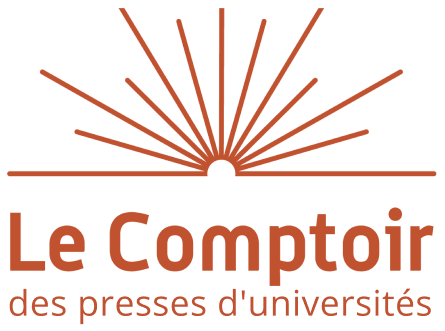Journal of the French Conrad Society
Presses universitaires de Limoges
L' L'Epoque Conradienne, volume 43/2020-2021
Energy in Hardy and Conrad
Les articles publiés dans ce volume interrogent comment les fictions de Hardy et de Conrad traitent de la question de l'énergie (humaine ou matérielle), les similitudes et les différences dans leurs approches et ce qu'elles peuvent révéler de l'époque, et de chaque écrivain : comment traduisent-elles son influence sur la vie humaine et le travail? Quel est son impact narratologique et structurant, et son influence sur les personnages ? Comment circule-t-elle dans les fictions, affectant leurs engagements idéologiques et notre ou nos lectures ?À notre époque de crise qui nous oblige à reconsidérer nos besoins en énergies fossiles et à imaginer de nouveaux modes de vie basés sur des sources d'énergie alternatives, enquêter sur son impact dans leurs fictions peut nous réserver des leçons.The age of Thomas Hardy and Joseph Conrad saw the discovery of many new forms of energy: steam, gas and electricity contributed to reshaping the environment as well as the social and economic organization of the world. How did these new energies compete or interfere with older ones, like those of the human body and of nature in general? And how did the two writers accommodate, or render in prose or verse the power of these new energies, the fascination/repulsion for their chemical/physical impulses? Aside from pure epistemology, can the notion of energy help us read the two authors differently?This volume contains papers given in the panel "Energy in Conrad and Hardy" during the 15th Esse International Conference held online (Lyon, France) on 01-02 September, 2021. Two more articles are also included in the issue.Publication was made possible thanks to the support of Ehic (Université de Limoges).
18.00€
L' L'Époque Conradienne, volume 42/2019
Transnational Conrad
This volume contains papers given during the international conference "Transnational Conrad: between Texts and Theory" held in Limoges (France) on 21-22 September, 2017. It complements the articles published in volume 41.
18.00€
L' L'Époque Conradienne, volume 41/2017-2018
Conrad was an experimenter, playing with forms, genres, narrative modes, literary conventions, on which a transnational approach sheds a new light, underlining aspects of his texts like the presence of a variety of languages, cultures, genres, traditions or his ideological ambiguity.It is such an approach that motivated the international conference in Limoges (France) held on 21-22 September, 2017. Contributors to this volume of L'Epoque Conradienne have considered Conrad and his works from a transnational perspective in order to explore how we read them both as aesthetic and ethical artefacts nowadays, and why we find the questions they broach so often so close to us.
18.00€
L' L'Époque Conradienne, volume 40/2015-2016
Terra incognita: The Feminine in Joseph Conrad's Works: Borders and Boundaries
The papers published in this volume were first given at a one-day international conference, held at the Université Jean Moulin-Lyon3 on December 12, 2014. It was hosted jointly by the Société Conradienne Française and the Institute for Transtextual and Transcultural Studies (I.E.T.T., a Lyon 3 research center) and was organized as a follow-up to the 2006 conference in Limoges entitled: "'Feminity, a privilege – not feminism, an attitude': the 'feminine' in Joseph Conrad's fiction: from ideology to a poetics of heterogeneity".Building on the ideas addressed during this conference, which included notions of stereotypes and the way in which Conradian fiction brings to light new gender representations and explores the link between patriarchy and imperialism, the Lyon conference invited participants to further investigate the relationship between the feminine, ideology, politics and aesthetics, examining the nature of the borders that separate or link these different territories, as well as the border between the masculine and the feminine.
18.00€
L' L'Époque Conradienne, volume 39/2013-2014
The Unexpected in Joseph Conrad's Fiction
"It is always the unexpected that happens", Marlow muses in Lord Jim. In Conrad's texts, the unexpected is at least disruptive, often traumatic. A trivial object, an insignificant event or character crops up, and the course of reality is undone. The symbolic order is shaken at its roots, the truth is glimpsed. One occurence of the unexped won't make the protagonist wiser, however, there is no ready-made answer. How does Conrad's fiction deal with the contingent, the traumatic? If we follow Giorgio Agamben's argument that the contemporary writer always takes us by surprise, how does Conrad remain our contemporary in this respect?
15.00€
Inscrivez-vous à notre newsletter
Abonnez-vous à notre newsletter pour recevoir les actualités, les mises à jour et les derniers projets sur lesquels nous travaillons.
